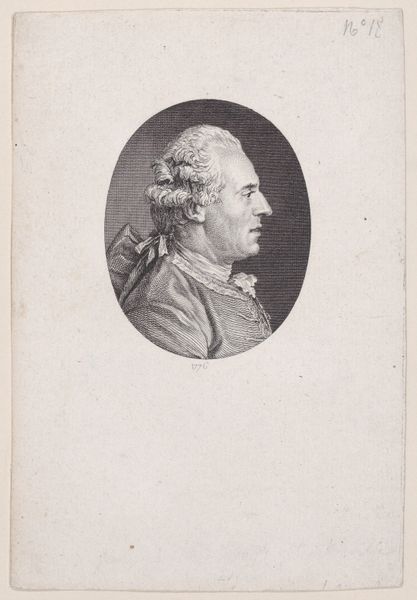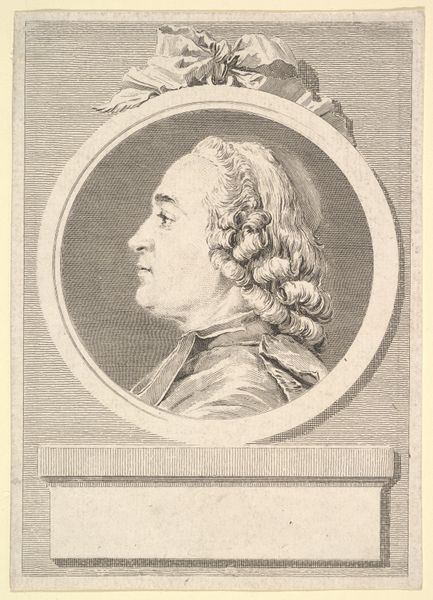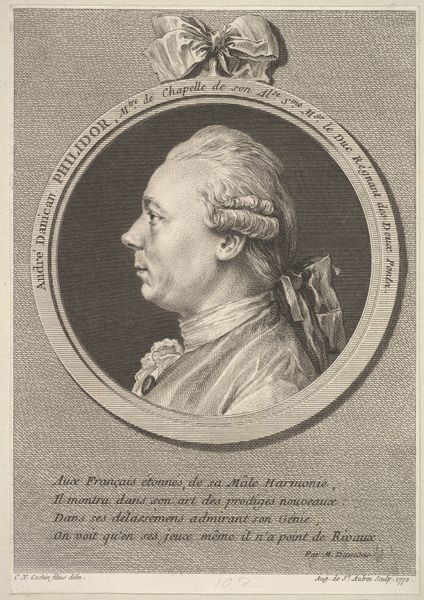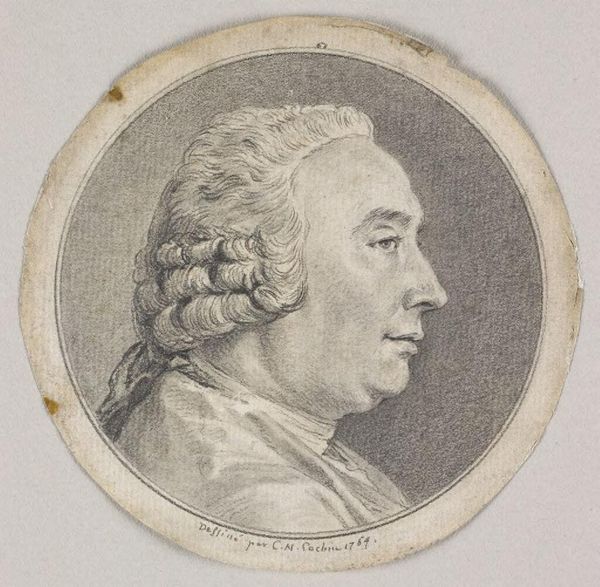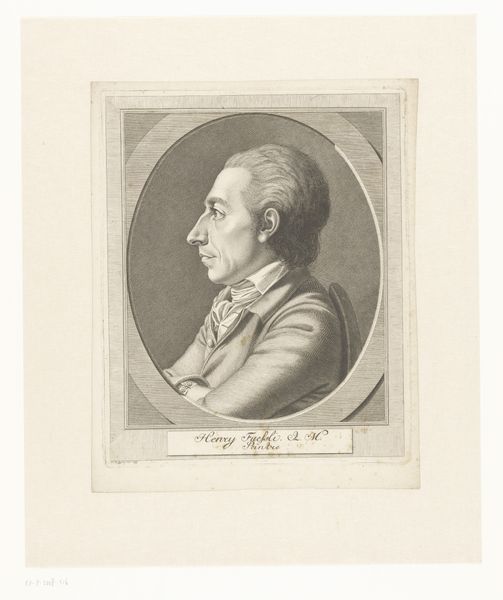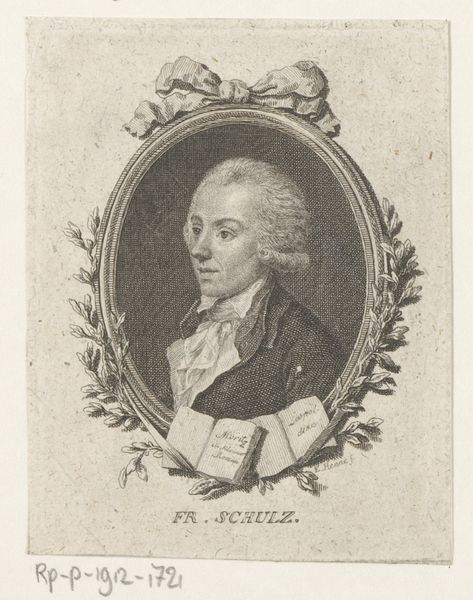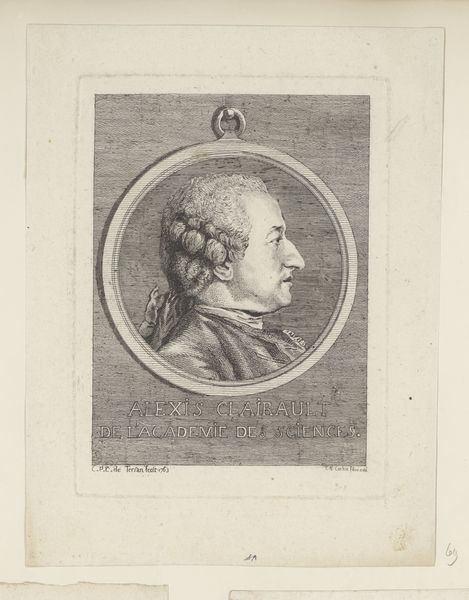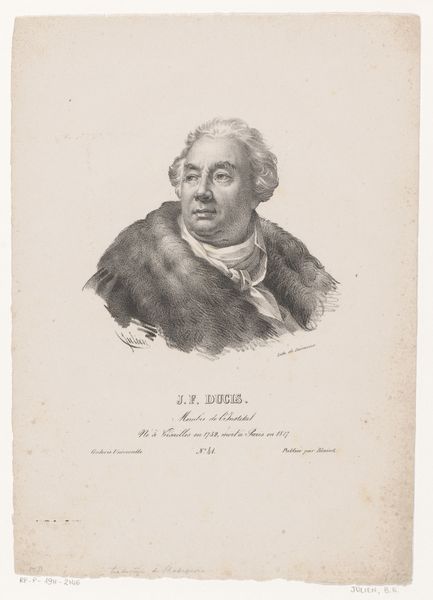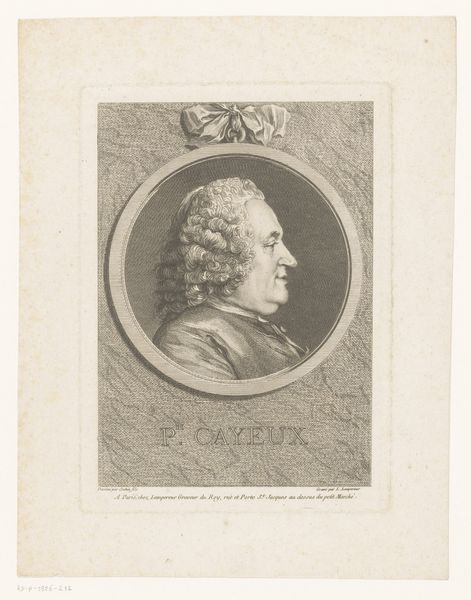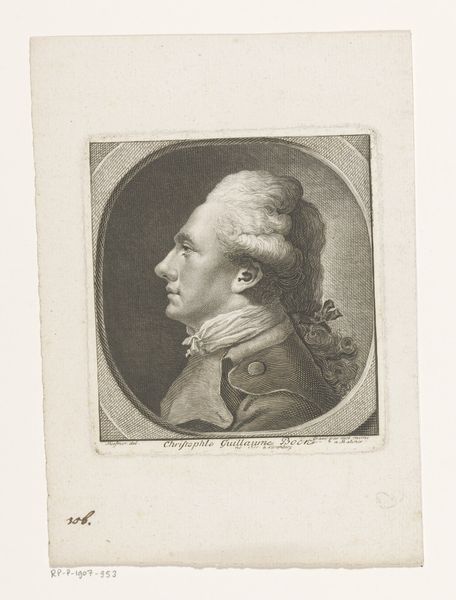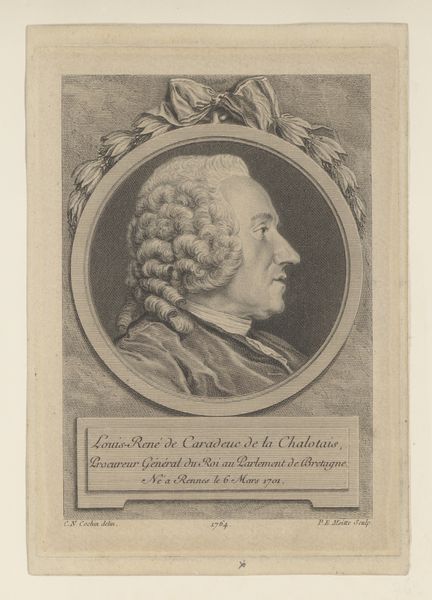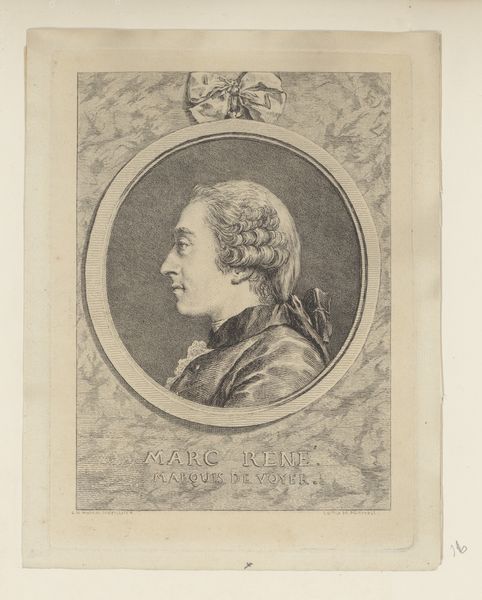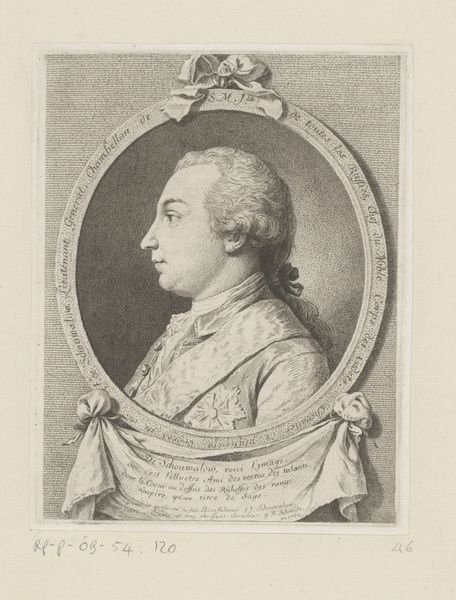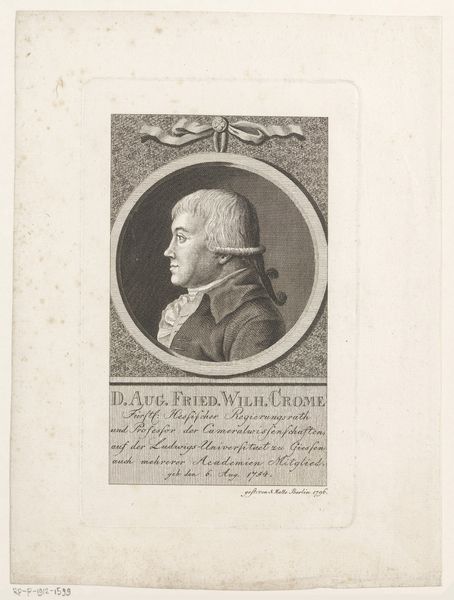
drawing, print, engraving
#
portrait
#
drawing
#
neoclacissism
# print
#
figuration
#
line
#
engraving
Dimensions: Sheet: 4 15/16 × 3 3/4 in. (12.6 × 9.5 cm) Plate: 4 3/8 × 3 3/4 in. (11.1 × 9.5 cm)
Copyright: Public Domain
This is Augustin de Saint-Aubin’s portrait of L. F. Prault, made in 1786. It’s an engraving, meaning the image was incised into a metal plate, inked, and then printed onto paper. Look closely, and you can see how the density of fine lines creates shading and texture, defining Prault’s face, wig, and clothing. The quality of the lines speaks to the engraver's skill, but this wasn't just artistic expression. Engraving played a crucial role in disseminating images and knowledge during the Enlightenment. Prints like this could be reproduced and distributed widely, fueling public discourse and shaping opinion. The labor-intensive process also reflects the economics of the time. Printmakers were artisans, often working collaboratively in workshops. Their craft was essential to the cultural and commercial landscape, but often overlooked as "low" art compared to painting or sculpture. By appreciating the skill and labor involved in creating this print, we recognize the complex interplay of art, craft, and social context in the 18th century.
Comments
No comments
Be the first to comment and join the conversation on the ultimate creative platform.
